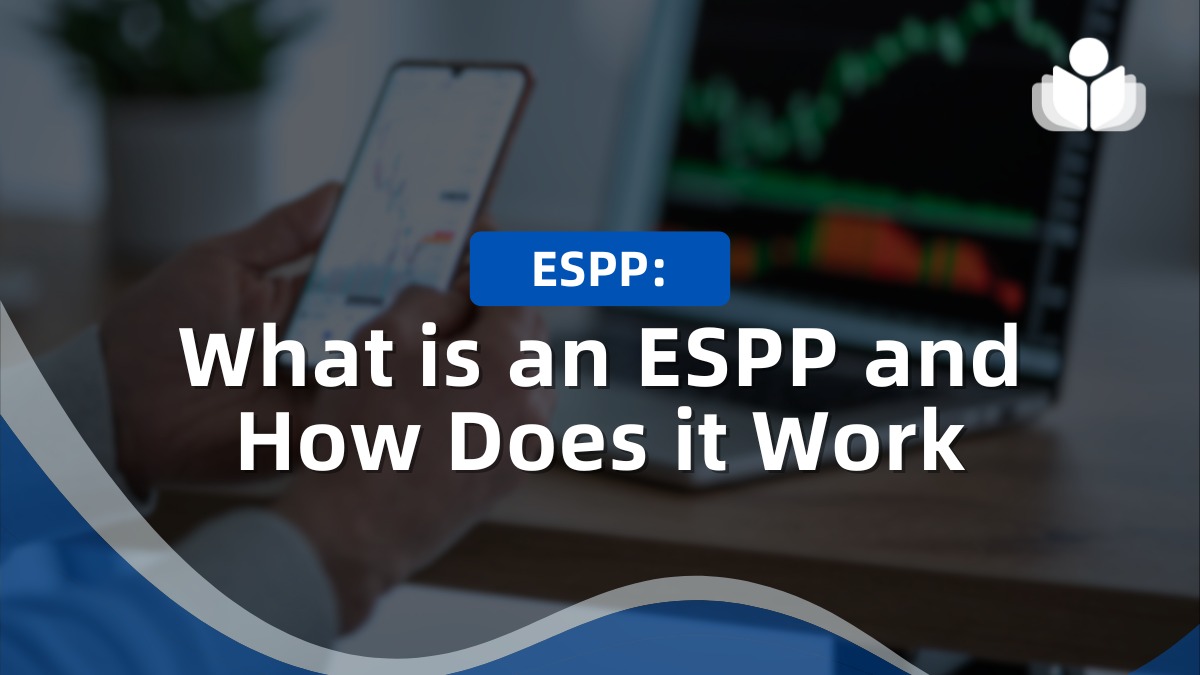An Employee Stock Purchase Plan (ESPP) is a company-run program in which participating employees can purchase company stock at a discounted price.
These plans offer employees a convenient and often lucrative way to own a part of the company they work for, aligning their interests with those of the company and providing a potential financial reward for their contributions.
This article explores the details of ESPPs, how they operate, and the benefits and considerations for employees participating in these plans.
Understanding ESPPs
An ESPP is a benefit plan offered by many publicly traded companies to their employees. It allows employees to purchase shares of the company’s stock at a price lower than the market value, typically through payroll deductions over a specified offering period.
The primary objective of an ESPP is to provide employees with a financial incentive to invest in the company’s success, thus promoting loyalty and a sense of ownership.
Types of ESPPs
There are two main types of ESPPs:
- Qualified ESPPs: Also known as Section 423 plans (named after the section of the Internal Revenue Code that governs them), qualified ESPPs are subject to specific IRS requirements and offer favorable tax treatment. These plans must be offered to all company employees, with certain exceptions allowed, and come with restrictions on the maximum discount and purchase limits.
- Non-Qualified ESPPs: These plans don’t have to meet the same IRS requirements as qualified plans, thus offering the employer more flexibility. However, they don’t provide the same tax advantages to employees. Non-qualified ESPPs can have varied eligibility criteria and terms, making them more customizable to the needs of the company and its workforce.
How ESPPs Work?
Enrollment and Offering Period
Employees typically enroll in an ESPP during a designated enrollment period. Once enrolled, employees select a percentage of their salary to be deducted and used to purchase company stock. These deductions are collected over an offering period, which usually ranges from 3 to 27 months, depending on the company’s plan.
Purchase Price and Discount
One of the key attractions of an ESPP is the ability to buy company stock at a discount. The discount can be as much as 15% off the lower stock price at the beginning or end of the offering period. This feature is known as the “lookback provision” and can provide substantial savings and potential for gain if the stock price increases over the offering period.
Purchase and Holding Periods
At the end of the offering period, the accumulated funds from payroll deductions are used to purchase shares of the company’s stock at a discounted price.
The purchased shares may be subject to a holding period, especially for qualified ESPPs, to receive favorable tax treatment. Typically, this means holding the shares for at least one year after the purchase date and two years after the offering date.
Tax Implications of ESPPs
The tax treatment of ESPPs is an essential consideration for employees, particularly for qualified ESPPs that offer potential tax benefits.
Qualified ESPPs
For qualified ESPPs, the discount on the stock purchase isn’t immediately taxed as income. Instead, employees are taxed when they sell the stock.
If the holding period requirements are met (one year from the purchase date and two years from the offering date), the gain is treated as a long-term capital gain, taxed at a lower rate than ordinary income. The discount, however, is considered ordinary income and reported on the employee’s W-2 form.
If the holding period requirements aren’t met, the discount is taxed as ordinary income at the time of sale, and any additional gain is taxed as a capital gain, which could be at a higher rate.
Non-Qualified ESPPs
In non-qualified ESPPs, the discount is treated as ordinary income at purchase. When the shares are sold, any additional gain or loss is treated as a capital gain or loss, depending on the holding period.
Benefits of ESPPs
Financial Incentives
ESPPs provide employees with a financial incentive to invest in their company. The discount on stock purchases offers immediate value, and the potential for stock price appreciation provides additional upside.
Employee Ownership
By offering employees the chance to own company stock, ESPPs promote a sense of ownership and alignment with the company’s goals. This can lead to increased motivation and productivity, as employees directly benefit from the company’s success.
Favorable Tax Treatment
Qualified ESPPs offer favorable tax treatment, allowing employees to pay lower taxes on their gains. This can enhance the overall financial benefits of participating in the plan.
Convenient Savings and Investment
ESPPs provide a straightforward and automatic way for employees to save and invest. Payroll deductions make it easy to accumulate funds for stock purchases without actively managing the investment.
Considerations and Risks
Stock Price Volatility
Company stock prices can be volatile, and there’s no guarantee that they’ll increase over the offering period. Employees should be aware of the risks associated with investing in individual stocks and consider their overall investment strategy and risk tolerance.
Concentration Risk
Investing a significant portion of one’s savings in a single company’s stock can lead to concentration risk. Employees should be mindful of how much of their portfolio is tied up in their employer’s stock and consider diversifying their investments to mitigate this risk.
Tax Implications
While ESPPs can offer favorable tax treatment, employees should understand the tax implications of their participation. This includes awareness of the holding period requirements for qualified ESPPs and the potential tax liabilities upon selling the shares.
Enrollment and Administrative Considerations
Employees must understand the specifics of their company’s ESPP, including the enrollment process, offering periods, purchase price calculations, and any holding period requirements. They must also stay informed about any changes to the plan that might affect their participation.
Maximizing the Benefits of an ESPP
To maximize the benefits of participating in an ESPP, employees should consider the following strategies:
Understanding the Plan
It’s crucial to thoroughly understand the ESPP’s specifics, including the enrollment periods, offering periods, purchase discounts, and holding requirements. Employees should review the plan documents and seek clarification from their HR department or financial advisor.
Regular Participation
Consistently participating in the ESPP can help employees fully take advantage of its benefits. By contributing regularly, employees can accumulate shares over time and benefit from dollar-cost averaging, reducing the impact of stock price volatility.
Meeting Holding Period Requirements
Meeting the holding period requirements is essential for qualified ESPPs to take advantage of favorable tax treatment. Employees should plan their sales accordingly to minimize their tax liability and maximize their after-tax returns.
Diversification
While participating in an ESPP can be advantageous, it’s important for employees to maintain a diversified investment portfolio. This can help mitigate the risks associated with investing heavily in a single company’s stock and ensure a balanced approach to long-term financial planning.
Monitoring and Adjusting
Regularly monitoring the performance of the company stock and the overall ESPP can help employees make informed decisions about their participation. If there are significant changes in the company’s prospects or the stock’s performance, employees may need to adjust their contributions or selling strategies accordingly.
Conclusion
Employee Stock Purchase Plans (ESPPs) offer employees a valuable opportunity to invest in their company’s success and benefit from the potential growth of the company’s stock.
Employees can make informed decisions about their participation by understanding how ESPPs work, the types of plans available, the tax implications, and the strategies for maximizing benefits.
While risks are associated with investing in company stock, the financial incentives, sense of ownership, and potential for favorable tax treatment make ESPPs an attractive option for many employees.
As with any investment decision, employees should consider their individual financial situation, risk tolerance, and long-term goals when participating in an ESPP.
 Sections of this topic
Sections of this topic
















